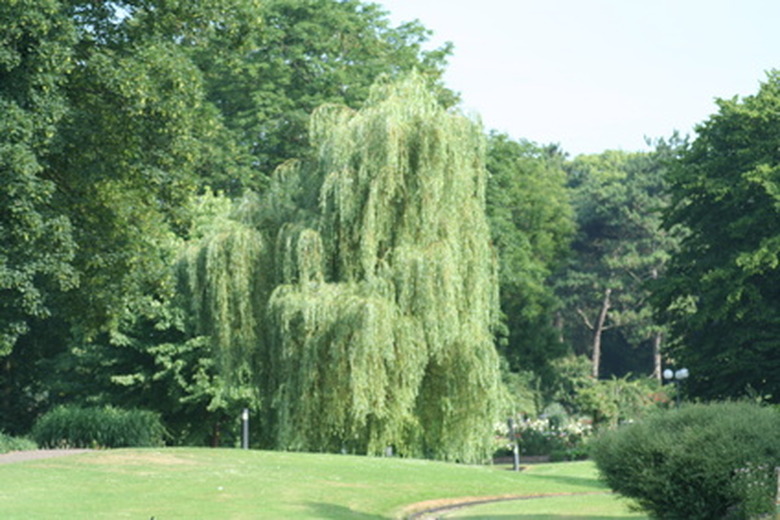How To Grow Weeping Willow Trees In Minnesota
Things Needed
- Shovel
- Weeping willow sapling
- Mulch
- Lopping shears
- 13-13-13 fertilizer
Weeping willow trees (Salix spp.) produce long branches covered with pale-green foliage. Their graceful weeping form adds elegance to any landscape. While these trees commonly grow along riverbanks or ponds, they tolerate drier soils, too. Minnesota's climate falls into hardiness zones 2 to 4 and is the northernmost limit of the weeping willow's range. These trees will grow well throughout Minnesota if given adequate water, fertilizer and care. Purchase container weeping willow trees in the spring just before you plan to plant them.
- Weeping willow trees (Salix spp.)
- These trees will grow well throughout Minnesota if given adequate water, fertilizer and care.
Step 1
Plant the weeping willow tree in full or partial sun and where there is enough room to accommodate the mature tree's height, which can reach 70 feet. Plant in sandy, loamy or clay soils that drain well. The weeping willow will tolerate a wide range of soil pH levels.
Step 2
Dig a hole for your weeping willow that is twice the width of the sapling's rootball and just as deep as the rootball. Remove rocks, roots and weeds from the hole. Jab a shovel at the bottom of the hole to roughen the soil to help the tree's roots adapt.
Step 3
Pull the weeping willow sapling from its container and break apart the rootball using your fingers. Unwind tangled and circled roots, since trees planted with circled roots can choke and die.
- Plant the weeping willow tree in full or partial sun and where there is enough room to accommodate the mature tree's height, which can reach 70 feet.
- Pull the weeping willow sapling from its container and break apart the rootball using your fingers.
Step 4
Place the weeping willow in the hole so that the trunk is straight and the tree sits at the same depth as it did in the container. Backfill the hole with soil.
Step 5
Saturate the ground with water until the soil around the tree compresses.
Step 6
Lay a 3- to 6-inch layer of mulch on the ground to help the soil retain moisture.
Step 7
Give the tree 1 inch of water per week.
Step 8
Prune the weeping willow annually in the late spring when frost danger passes, using lopping shears. Remove branches that don't take on the weeping form, cut back the tips of long branches that drag on the ground and thin out the canopy to promote air circulation. Remove dead or damaged branches and those that crisscross other branches. Weeping willow trees won't need much pruning for the first couple years.
- Place the weeping willow in the hole so that the trunk is straight and the tree sits at the same depth as it did in the container.
- Remove branches that don't take on the weeping form, cut back the tips of long branches that drag on the ground and thin out the canopy to promote air circulation.
Step 9
Fertilize the weeping willow each year in late spring with 1/4 lb. of 13-13-13 fertilizer for a young weeping willow with a 4-foot canopy. Scatter the fertilizer on the ground around the tree. Add water to work the fertilizer into the soil. Follow the manufacturer's guidelines for the amount of fertilizer as the tree grows.
